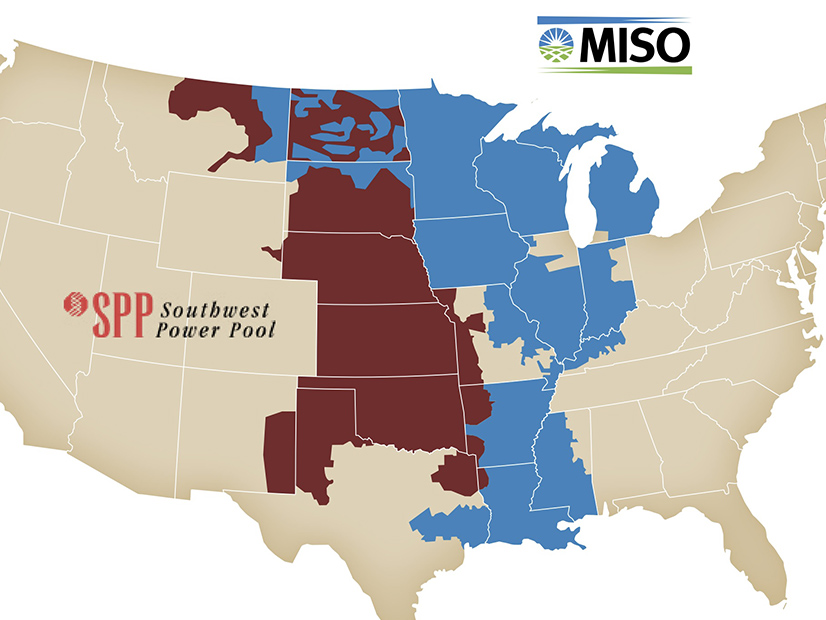With two ongoing interregional study efforts and a pledge for better seams coordination, MISO and SPP are launching a new biannual set of stakeholder meetings.
MISO said last week the RTOs will debut Common Seams Initiatives meetings twice per year starting next month.
The meetings will cover the grid operators’ “strategic goals related to better seams coordination in support of improved reliability and market efficiency,” MISO said. It pointed to the ongoing Joint Targeted Interconnection Queue study, recommendations from their state regulators, and updating their “freeze date” used determine their flowgates’ firm transmission rights.
The RTOs have also pledged to conduct a targeted market efficiency project study this year that will search for smaller, congestion-relieving interregional projects. (See MISO, SPP Take on 2nd Interregional Planning Effort.)
MISO said it could add more annual Common Seams Initiatives meetings if necessary. SPP will host the first virtual meeting on May 17. MISO will organize an upcoming November slot.
Melissa Seymour, MISO’s vice president of external affairs, said the RTOs aren’t looking to replace any current meetings. The biannual meetings will serve as a one-stop update and stakeholder discussion on seams topics.
The common seams meetings announcement comes as MISO Independent Market Monitor David Patton last week said that SPP is not properly recognizing market-to-market flowgate constraints with MISO in its day-ahead market. (See MISO Says System Volatility Here to Stay.)
During a Market Subcommittee teleconference Thursday, Patton said the oversight must be costing SPP members several million dollars in balancing congestion. He said he continues to work with the RTO and its Monitor to persuade it to properly model constraints.
Seymour said SPP might not be neglecting to recognize constraints but just may have a different method of modeling them than MISO does.
“I’m not sure that they don’t model that day-ahead congestion on the market-to-market flowgates,” she said.
But Patton insisted that SPP considers the constraints, but doesn’t model them, “which is essentially ignoring them.” He said MISO probably has grounds to file a FERC enforcement complaint against SPP but added that’s not the quickest way to arrive at a solution.



